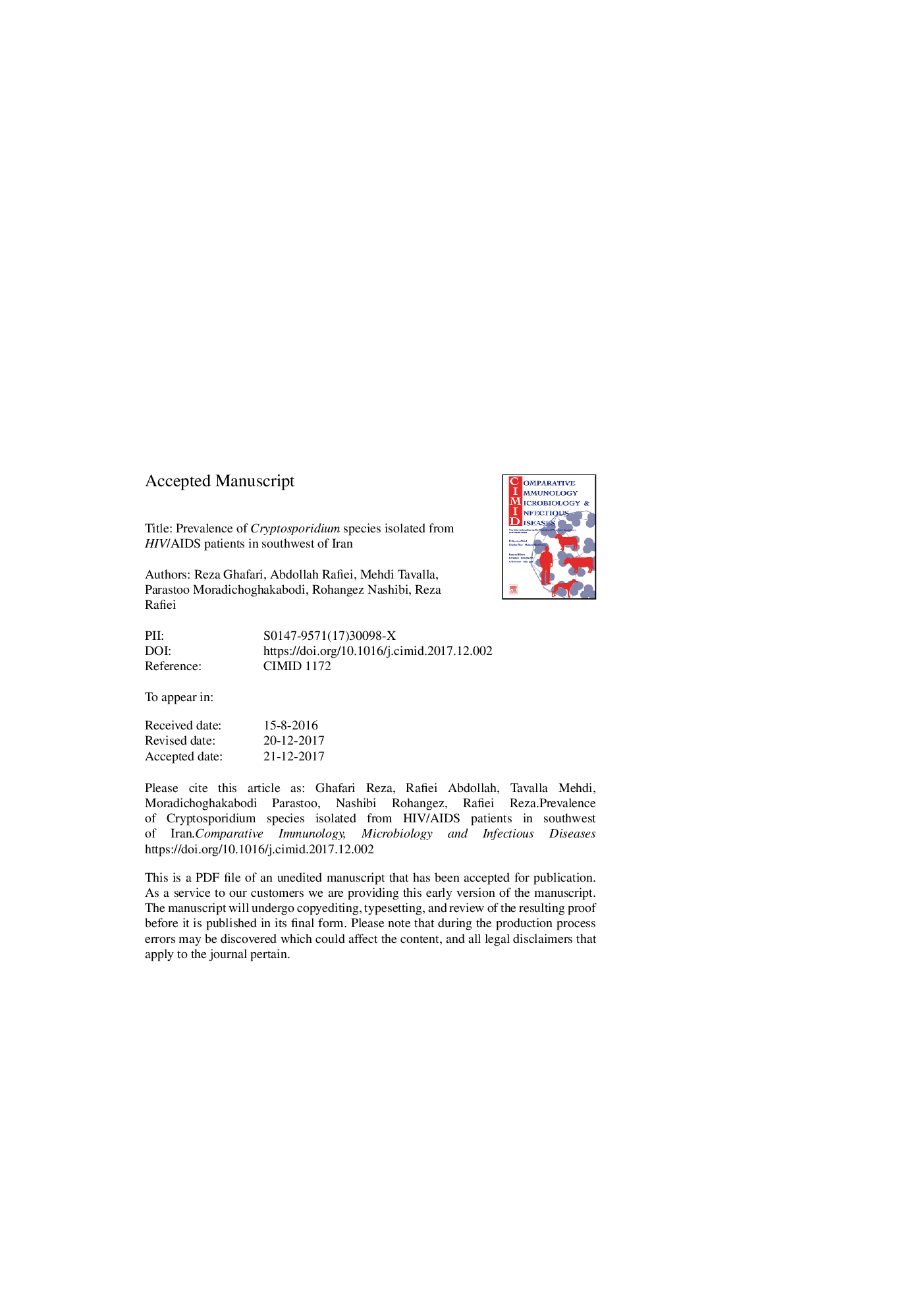| Article ID | Journal | Published Year | Pages | File Type |
|---|---|---|---|---|
| 8497549 | Comparative Immunology, Microbiology and Infectious Diseases | 2018 | 22 Pages |
Abstract
This study aimed to determine the prevalence and species of Cryptosporidium among HIV/AIDS patients in southwest of Iran. Two hundred fifty faecal samples from HIV patients were examined for the presence of Cryptosporidium oocysts using a conventional coproscopic approach. Such oocysts were detected in 18 (7.2%) out of 250 faecal samples. Genomic DNAs from 250 samples were then subjected to a nested-PCR-RFLP technique targeting different loci of 18S rRNA gene for species identification. Out of 250 samples, 27 (10.8%) were positive for different Cryptosporidium spp; Restriction patterns resulting from the digestion of the nested amplicon with restriction endonucleases VspI and SspI showed that C. parvum (70.38%) was the most prevalent species, followed by C. hominis (25.92%) and C. meleagridis (3.7%), respectively. The mean CD4+ T-cell count was 215 cells/μL. There was a strong association between cryptosporidiosis and CD4+ T-cell count (Pâ¯=â¯0.000) with the highest prevalence recorded among patients with CD4+ T-cell countâ¯<â¯200 cells/μL. This confirms that there is a low opportunity for this parasite to get established as the patients CD4+ T-cell count increases. Also HIV infection increased the risk of having Cryptosporidium. Our epidemiological findings are useful for any preventive intervention to control disease diffusion.
Keywords
Related Topics
Life Sciences
Agricultural and Biological Sciences
Animal Science and Zoology
Authors
Reza Ghafari, Abdollah Rafiei, Mehdi Tavalla, Parastoo Moradi Choghakabodi, Rohangez Nashibi, Reza Rafiei,
